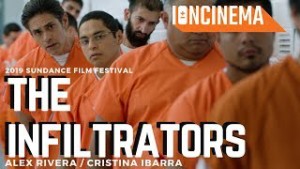Should You Break Documentary Convention?
One of the most exciting documentaries to emerge from Sundance this year is The Infiltrators, a narrative experiment which won the festival’s Audience Award and Innovator Award.
Breaking the conventional filmmaker/subject wall, the directors enlisted undocumented Americans as co-conspirators to voluntarily get themselves detained. Their mission: release themselves and their fellow detainees.
Mixing verite scenes with scripted re-enactment, this thriller expands the documentary genre “in exciting new ways,” according to The Hollywood Reporter. “Once we freed ourselves from conventional documentary ethics,” said the directors, “we entered into a realm of possibilities”.
While many directors love the idea of “freeing themselves from convention,” it pays to live within the creative constraints that a narrative arc can provide. The Infiltrators does and still delivers on innovation.
Contrast that with American Factory, winner of the Sundance Directing Award for Best Documentary. This verite journey starts like a character-driven documentary when a Chinese billionaire opens a factory in an old GE factory.
But the narrative suffers from unrealized character arcs. With five camera crews, it’s possible the footage covers the factory floor too broadly, at the expense of individual workers’ plot points. Also, at 115 minutes, American Factory is 20 minutes longer than The Infiltrators.
That’s a long Act Two for a Sundance premiere these days!
The takeaway? Film industry pressure to “try something new” can become a gratuitous temptation to bypass conventional story structure.
Case in point. Also appearing at Sundance this year, director Janice Engel first approached Raise Hell: The Life & Times of Molly Ivins as a straightforward biopic.
“My initial gut was to tell Molly Ivins’ story in a classic three-act character-driven structure,” Engel told Filmmaker Magazine.
But industry colleagues persuaded her to abandon that approach and experiment with what become a “complicated overly thematic mish-mash”. Find out how award-winning editor Kate Amend got her back on structural track with Engel’s original 3-act index card structure.
Bottom line: structural conventions stick around because they work. Break them carefully, and only for a good reason!
